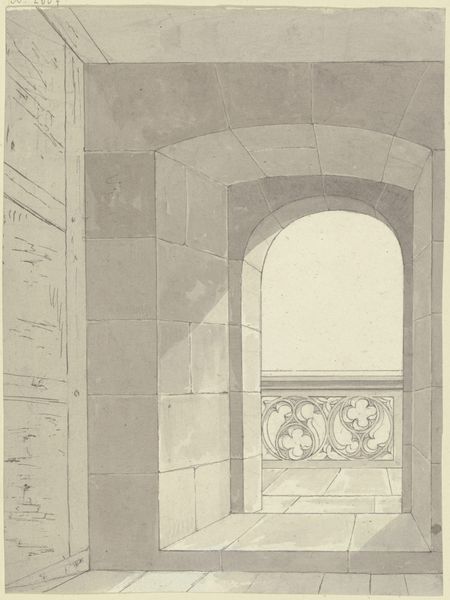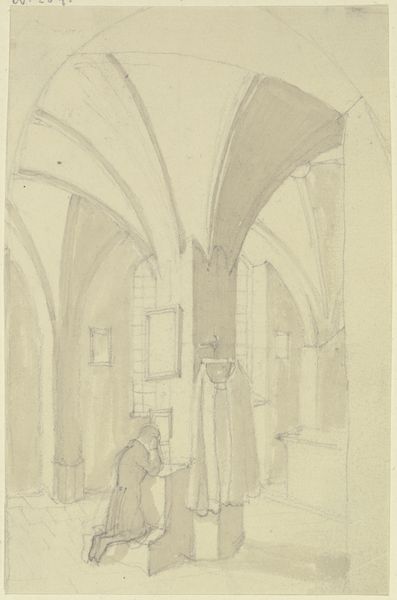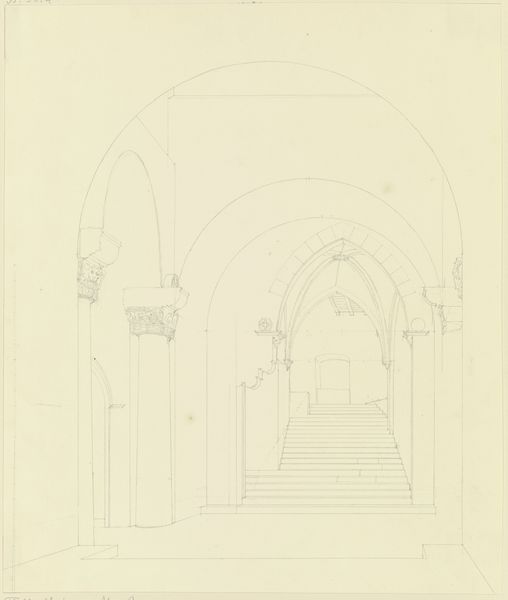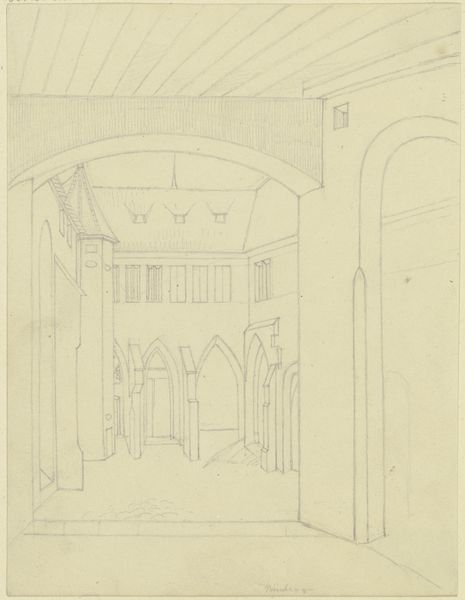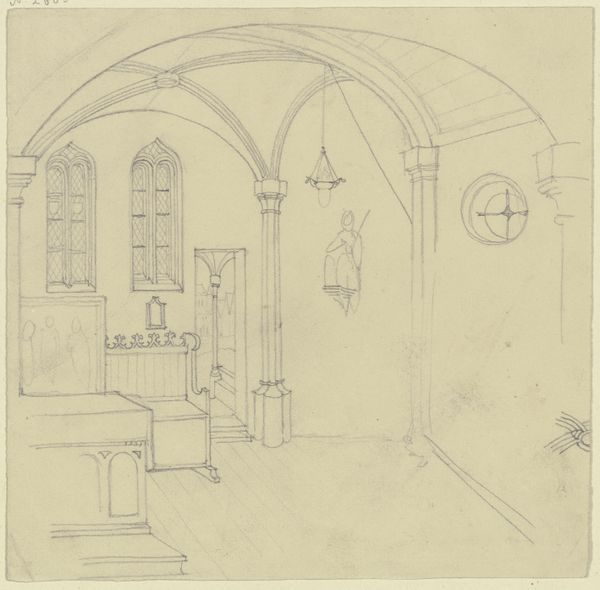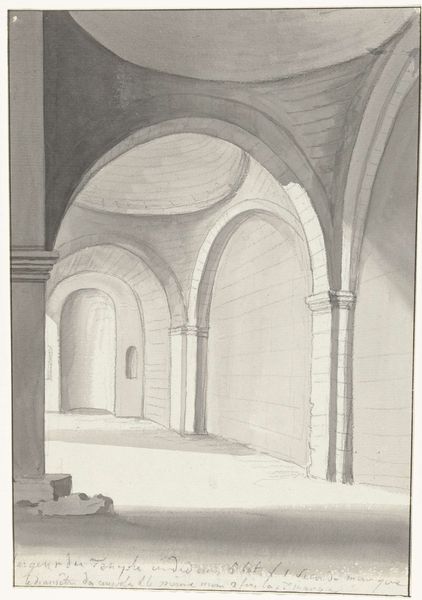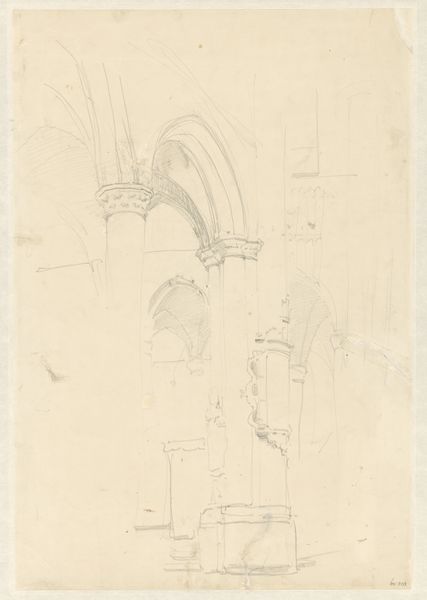
drawing, ink, architecture
#
drawing
#
ink
#
geometric
#
romanticism
#
architectural drawing
#
line
#
academic-art
#
architecture
Copyright: Public Domain
Editor: This drawing, "Balcony of a tower" by Karl Ballenberger, made with ink in 1833, feels like stepping into a silent, perhaps abandoned, space. The architecture dominates the view, but there’s something quite stark about the light. What story do you see reflected here? Curator: What I notice is how this architectural rendering, typical of academic art training, positions architecture as more than mere building. Think about the early 19th century; the Gothic Revival was in full swing. Buildings weren’t just structures; they were loaded symbols of national identity and historical legitimacy. Why do you think Ballenberger chose this subject? Editor: Possibly because he was interested in the structure of the place? Also, the location of the museum (Städel Museum) may offer some hint regarding the national identity to which it is referring. Curator: Precisely! Remember, museums at that time were also formative national projects. By sketching architectural details, he’s not just documenting, but participating in a cultural conversation about heritage. The stark lighting flattens space to focus on outlines: It also seems as though it romanticizes the ruin itself, doesn’t it? Consider, who was this drawing for? An audience appreciating the "picturesque" potential of such scenes. Editor: I didn’t initially think about its social function, but you're right, the act of sketching something like this probably shaped perceptions of heritage and national identity, not just reflected it. I guess seeing becomes a form of building. Curator: Exactly. That tension—between passively observing and actively shaping meaning—is where the political power of images often resides. This wasn't just a depiction of architecture, but an argument *through* architecture. It's less a record and more an argument of public value through art and heritage.
Comments
No comments
Be the first to comment and join the conversation on the ultimate creative platform.
